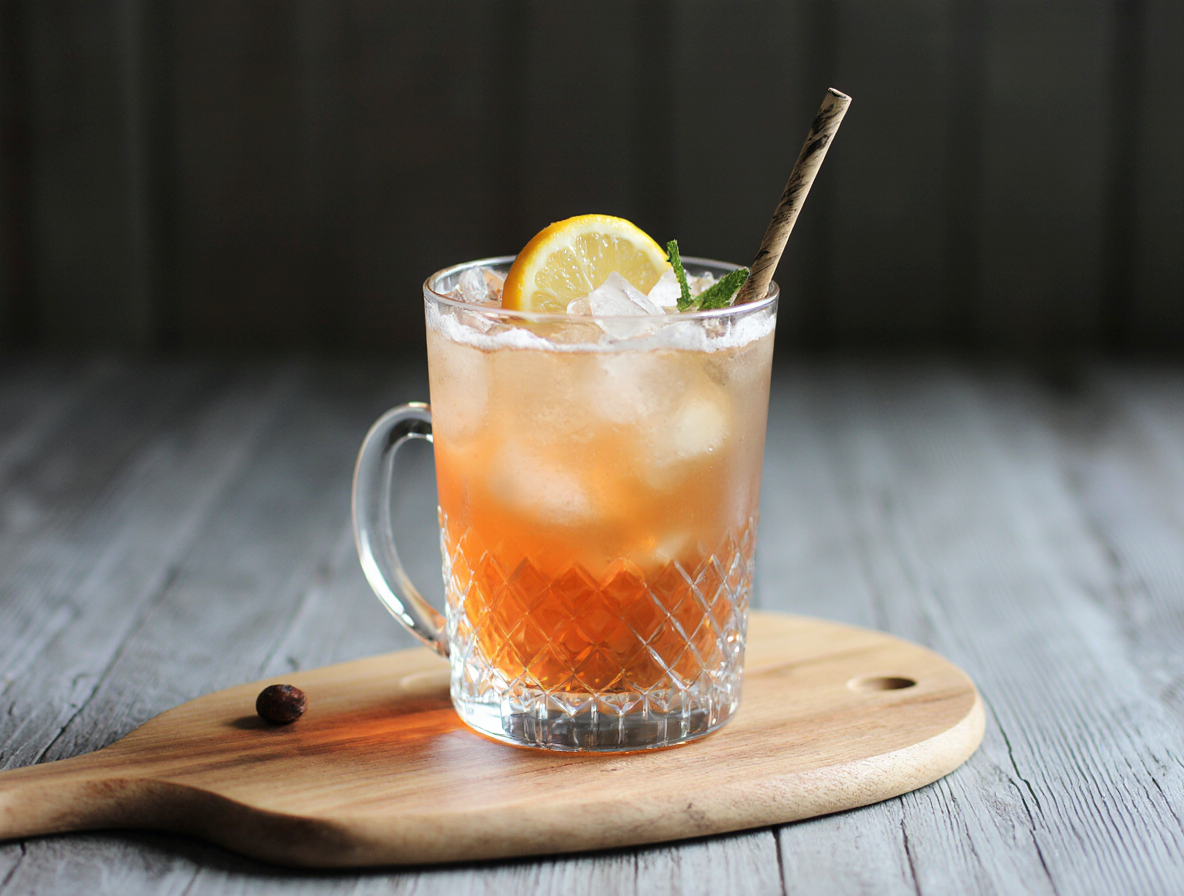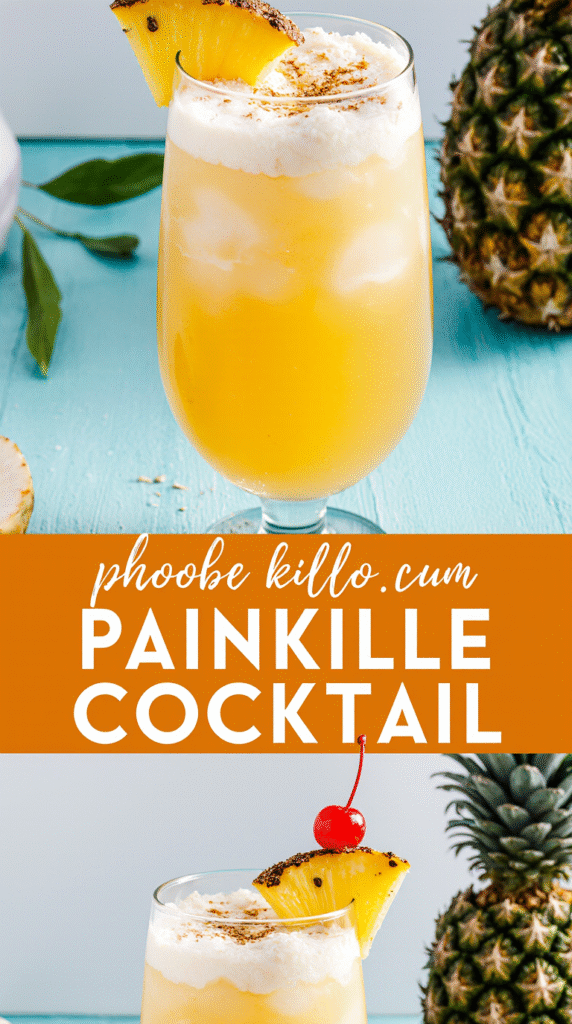Perfect Painkiller Drink Recipe: A Bartender’s Secret Caribbean Formula
The perfect painkiller drink recipe combines dark rum, tropical juices, and cream of coconut to create a cocktail that truly lives up to its name. Originally created at the Soggy Dollar Bar in the British Virgin Islands during the 1970s, this tiki classic has become a beloved staple for rum enthusiasts worldwide.
When crafting an authentic painkiller recipe, the traditional ingredients are straightforward but powerful. In fact, the painkiller cocktail recipe typically calls for Pusser’s Rum, a recreation of the British Royal Navy rum issued to sailors until 1970. This creamy rum concoction perfectly balances pineapple juice, orange juice, and cream of coconut, making it ideal for summer sipping. Additionally, when made with Pusser’s Blue Label (84 proof in the U.S.), the painkiller measures in at 10 percent ABV (20 proof), while providing 324 calories per serving.
In this guide, we’ll explore the fascinating history behind this Caribbean treasure, share our perfected painkiller drink recipe, and reveal what makes this cocktail so special. Whether you’re a seasoned bartender or a home mixologist, we’ll help you master this tropical classic that has stood the test of time.
The Caribbean Origins of the Painkiller Cocktail
The Painkiller’s story begins at the iconic Soggy Dollar Bar, nestled on White Bay’s pristine shores in Jost Van Dyke, British Virgin Islands. This beachside establishment earned its quirky name because patrons had to swim ashore, arriving with waterlogged currency.
Back in the 1970s, bartender Daphne Henderson created this tropical concoction, though some historical accounts suggest George and Marie Myrick, previous bar owners, might share credit for its invention. Initially, the cocktail featured Cruzan rum rather than the Pusser’s brand now commonly associated with it.
The drink quickly captured hearts throughout the Caribbean, becoming the region’s signature cocktail. Its delicious blend of dark rum, pineapple juice, orange juice, cream of coconut, topped with freshly grated Grenadian nutmeg created a flavor profile that tourists couldn’t resist.
Perhaps the most fascinating chapter in the Painkiller’s history involves Charles Tobias, founder of Pusser’s Rum. After Henderson repeatedly refused to share her secret recipe, Tobias reportedly smuggled a sample back to his kitchen on Tortola. Through careful experimentation, he developed his own version using a “4-1-1” ratio—four parts pineapple juice, one part cream of coconut, one part orange juice—plus Pusser’s Rum.
Furthermore, legend tells that Tobias challenged Henderson to a taste test at the Soggy Dollar, where local patrons judged his version superior. By 1989, Pusser’s had trademarked the cocktail name and recipe, sparking controversy years later when they legally pursued a New York bar named “Painkiller” for using alternative rums.
Despite these disputes, the Painkiller has achieved worldwide recognition, even making Drinks International’s World’s Best Selling Cocktails list. As of 2015, the original Soggy Dollar Bar had served an impressive four million Painkillers, cementing this drink’s legendary status in cocktail history.
How to Make the Perfect Painkiller Drink
Creating your own painkiller drink at home begins with gathering the right ingredients in proper proportions. This tropical masterpiece calls for precise measurements to achieve its signature flavor profile.
For an authentic painkiller recipe, you’ll need:
- 2 ounces Pusser’s Rum (or another quality dark rum)
- 4 ounces pineapple juice
- 1 ounce orange juice (freshly squeezed preferred)
- 1 ounce cream of coconut
- Crushed ice
- Freshly grated nutmeg
- Optional garnish: pineapple wedge or orange slice and cherry
Crafting the perfect painkiller involves more than just mixing ingredients. First, fill your cocktail shaker with ice cubes. Next, add the rum, pineapple juice, orange juice, and cream of coconut. Shake vigorously for about 20 seconds until the mixture is properly chilled. This thorough shaking ensures all ingredients blend smoothly together.
Pour the mixture into a hurricane glass or snifter filled with crushed ice. Subsequently, sprinkle freshly grated nutmeg on top – this isn’t just decorative but essential for an authentic flavor profile. Finally, garnish with a pineapple wedge or an orange slice and cherry if desired.
Regarding rum selection, although Pusser’s technically owns the trademark on the Painkiller, other dark rums can create wonderful variations. Excellent alternatives include Goslings Black Seal, Smith & Cross Traditional Jamaican Rum, or Appleton Estate Reserve Blend. Each brings different notes of caramel, spice, or vanilla that complement the tropical juices.
One crucial distinction to remember: cream of coconut differs significantly from coconut cream or milk. Cream of coconut contains added sugar, providing the perfect sweetness balance. Brands like Coco López or Coco Real work best.
For an extra professional touch, chill your serving glass beforehand. This prevents the ice from melting too quickly, maintaining the drink’s ideal temperature and consistency throughout your tropical escape.
This smooth, deceptively potent cocktail measures approximately 10% ABV, making it indeed a sneaky drink, so enjoy responsibly!
What Makes the Painkiller Unique
Unlike most tropical cocktails, the painkiller drink stands apart from other rum-based beverages through several distinctive characteristics. Perhaps most notably, it differs significantly from its closest relative, the piña colada.
The primary distinction lies in the base spirit. Whereas piña coladas typically feature light or silver rum, an authentic painkiller recipe specifically calls for Pusser’s Rum – a dark, robust navy rum. This difference is crucial since dark rum matures in charred oak barrels, developing a smoky, sweet flavor profile reminiscent of bourbon, which gives the painkiller its characteristic depth and complexity.
Ingredient proportions likewise separate these tropical cousins. The painkiller combines pineapple juice, orange juice, and coconut cream in a 4:1:1 ratio, resulting in a less sweet, more nuanced flavor compared to the piña colada’s equal-parts approach. Moreover, the addition of orange juice and the distinctive sprinkle of freshly grated nutmeg provides a vibrant tang and aromatic quality absent in piña coladas.
Even preparation methods diverge – painkillers are traditionally shaken with ice then strained into a glass, conversely, piña coladas are typically blended until smooth.
Interestingly, the painkiller cocktail remains at the center of an unusual trademark controversy. In 1989, Pusser’s Rum trademarked the drink name, stipulating that for a cocktail to be officially called a “painkiller,” it must contain Pusser’s Rum. This move sparked considerable debate among bartenders, especially considering the original 1970s version used Cruzan rum.
The trademark dispute came to a head in 2011 when Pusser’s sued a New York bar named “Painkiller”. The settlement required the establishment to change its name to “PKNY” and prohibited them from serving any drink called a painkiller without using Pusser’s Rum. This legal action prompted some bartenders to boycott the brand, highlighting how fiercely the cocktail community protects its classics.
Conclusion
The Painkiller stands tall among tropical cocktails as a true Caribbean treasure. This delightful blend of dark rum, pineapple juice, orange juice, and cream of coconut offers much more than just refreshment – it delivers a genuine taste of island history. Undoubtedly, the perfect balance of sweet, creamy, and fruity flavors makes this cocktail remarkably satisfying, especially when topped with freshly grated nutmeg.
Travelers still swim ashore to the legendary Soggy Dollar Bar where this cocktail originated, eager to taste an authentic Painkiller at its birthplace. Nevertheless, you can now recreate this tropical escape at home with our detailed recipe. The distinctive 4:1:1 ratio of juices and cream of coconut, along with the robust character of dark navy rum, sets this drink apart from its cocktail cousins.
Few beverages boast such a colorful history – from Daphne Henderson’s secret creation to Charles Tobias’ reverse-engineering efforts and subsequent trademark claim. This legal aspect actually represents something quite rare in cocktail culture, where most classic recipes remain freely interpreted.
Whether you stick strictly to Pusser’s Rum or experiment with other dark rum varieties, this cocktail delivers on its namesake promise. One sip transports you directly to White Bay’s shores. The deceptive smoothness masks its potency, so remember to enjoy this tropical delight responsibly. After all, a properly made Painkiller truly lives up to its name – washing away your cares with each delicious, rum-soaked sip.
FAQs
Q1. What are the main ingredients in a Painkiller cocktail? The main ingredients in a Painkiller cocktail are dark rum (traditionally Pusser’s Rum), pineapple juice, orange juice, and cream of coconut. It’s typically garnished with freshly grated nutmeg.
Q2. How does a Painkiller differ from a Piña Colada? A Painkiller uses dark rum instead of light rum, includes orange juice, and has a specific 4:1:1 ratio of pineapple juice, orange juice, and cream of coconut. It’s also shaken with ice rather than blended, and topped with nutmeg.
Q3. Where was the Painkiller cocktail invented? The Painkiller cocktail was invented at the Soggy Dollar Bar on Jost Van Dyke in the British Virgin Islands during the 1970s. The bar got its name because patrons had to swim ashore, arriving with wet money.
Q4. Why is there controversy surrounding the Painkiller cocktail? The controversy stems from Pusser’s Rum trademarking the “Painkiller” name in 1989. This led to legal disputes, including a lawsuit against a New York bar, as Pusser’s claimed only drinks made with their rum could be called Painkillers.
Q5. What’s the proper way to garnish a Painkiller? The essential garnish for a Painkiller is freshly grated nutmeg on top. Optionally, you can also add a pineapple wedge or an orange slice and a cherry for extra flair.


